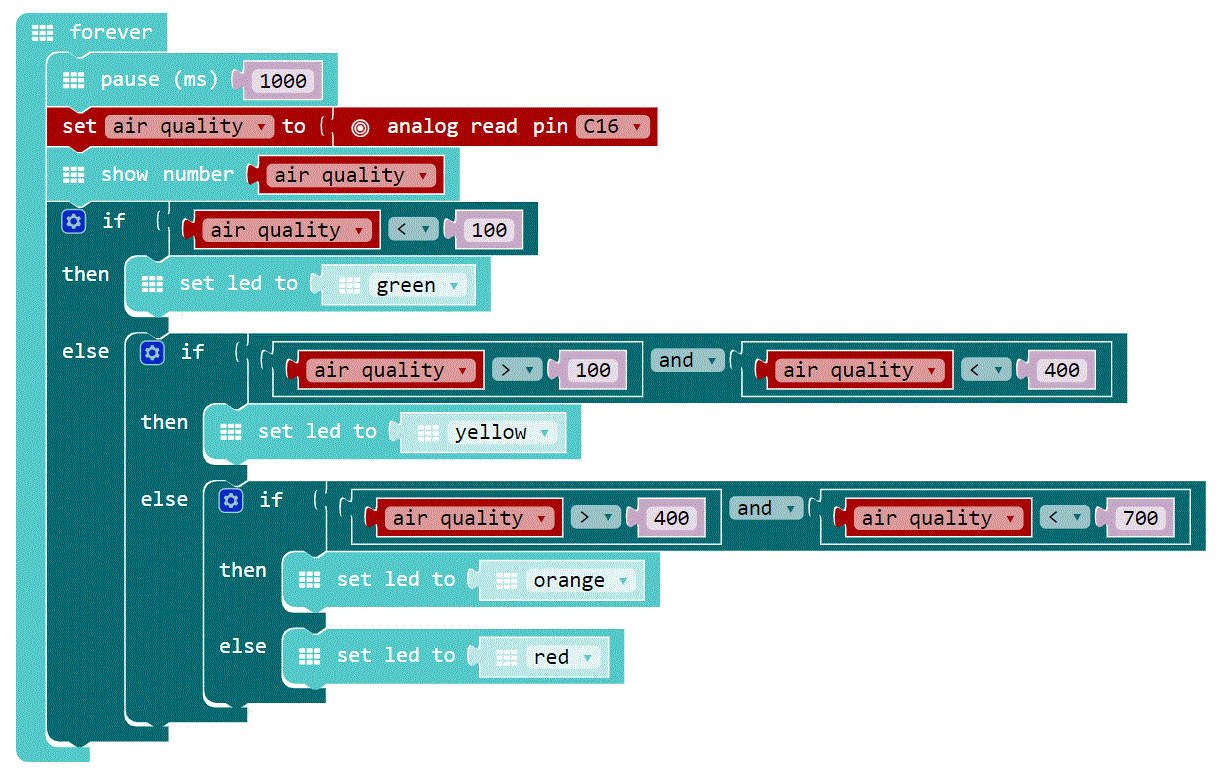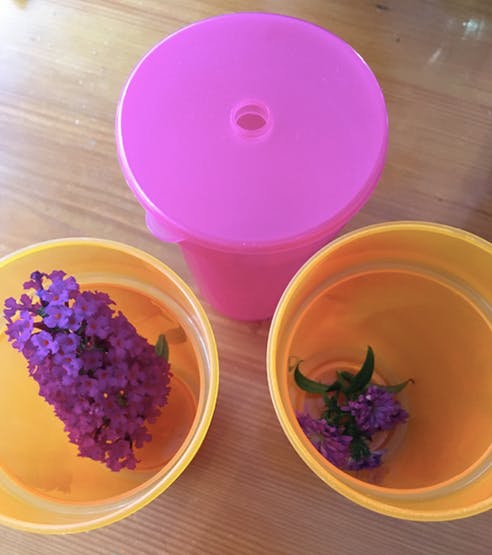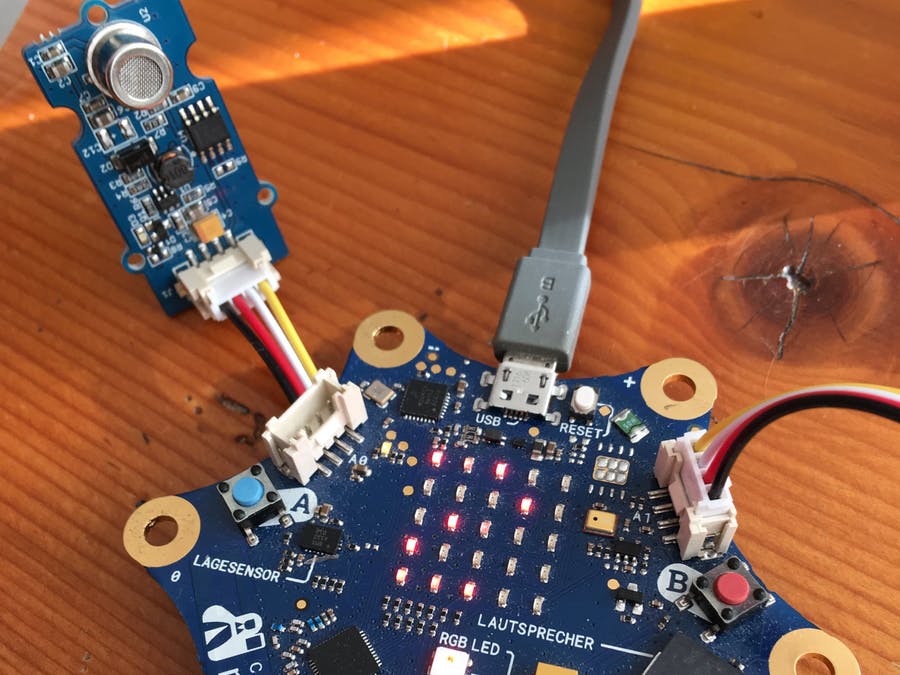If you find other sensors for 3.3V, please write to the original author HHF popup: yes. He is also looking for a "primary school safe" method to operate 5V sensors on the Calliope Mini.
In the beginning, I was at a loss about the connection of the sensor to the Calliope mini: I expected I2C or SPI and wondered if it would be difficult to initialize the sensor. Steini then helped me to get my brain up to operating temperature (fits the topic, see below) and then everything went very easily and very quickly. It's very, very simple:
Everything you need is on this SeeedStudio Wiki page: http://wiki.seeedstudio.com/Grove-Air_Quality_Sensor_v1.3/
Here you can find some more details in the C Code: https://github.com/Seeed-Studio/Grove_Air_quality_Sensor
The sensor actually has only one pin, which is read out analog. Use the right Grove connector on the Calliope mini and read out pin C16 analog. At the beginning you should wait 20 seconds, because the sensor has to be warmed up to reach its operating temperature.
Furthermore, there are (to put it simply) certain threshold values which say something about the measured air quality:
- a value below 10 or above 850 means sensor error (the code says 800, but we measured 808 at 70% alcohol)
- a value below 200 means low pollution (can be reduced to 100 if necessary, see below)
- a value above 400 can be described as a high pollution level
- a value higher than 700 means a very high pollution
In fact, the original C code works with two measurements and their difference, that's for advanced users, as below everything goes faster.

And then we made a first series of measurements (protocol daughter 1):
- outside air: 31
- indoor air: 34-50
- children's hair: 55-60
- beer: 315
- 70% alcohol: 808
Next, we looked for some blooming flowers and checked if the Calliope mini could smell them. That was not so easy, because in September of course not everything is in full bloom anymore.
But we took the two "most smelling" flowers and put them into cups for a few minutes, which have a lid with a straw opening: just right for the sensor.

Additional material:
Wikipedia: https://en.wikipedia.org/wiki/Electronic_nose
This text as well as the image is published under a CC0 1.0 Universal license popup: yes. It was originally published in German popup: yes by HHF popup: yes and translated into English by the Calliope team.


